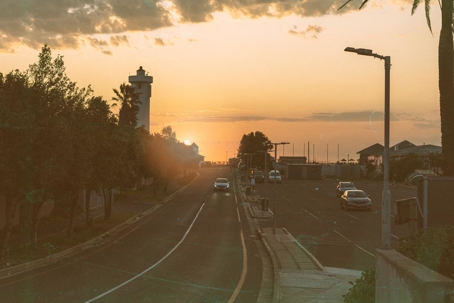By William P. Morrow, John Michael Morrow Law Firm, Opelousas, Louisiana
Every fall, as daylight hours shorten, a subtle but dangerous shift begins to occur on Louisiana’s roadways. Commutes that once took place under full daylight begin happening in twilight or near darkness. The transition is gradual at first—a little dimmer each week—but the effects on visibility, driver awareness, and accident rates are very real.
This seasonal change brings an uptick in vehicle collisions, particularly in the early morning and evening hours. For workers commuting to job sites, traveling for their employers, or navigating construction zones, this increase in risk isn’t just a personal safety issue—it can quickly become a legal one.
Low light changes how drivers perceive the environment. Objects appear further away than they are. Brake lights, turn signals, and pedestrians are harder to spot. Glare from the sun in the morning or from oncoming headlights in the evening can cause temporary blindness or delayed reaction time. The first few weeks following the end of daylight saving time are particularly dangerous because the body’s internal clock hasn’t adjusted, but the road conditions have.
From a legal standpoint, these seasonal changes often become relevant in workplace injury cases involving vehicle accidents. Louisiana law recognizes that certain types of travel may fall under the umbrella of employment—particularly when transportation is part of the job, the employee is running errands for the employer, or the use of the vehicle is controlled by the business. When an accident occurs under these circumstances, the injury may be compensable through the state’s workers’ compensation system.
However, determining liability becomes more complicated when environmental conditions like reduced light or poor visibility are involved. The question often isn’t just whether an employee was injured in an accident—but whether that accident could have been prevented if proper steps had been taken by all parties involved. If the employer required travel during high-risk times without providing proper equipment, lighting, or warnings, those details can become relevant to the case. Similarly, if a worker driving under pressure to meet a deadline rear-ends another vehicle due to limited visibility, that situation might still fall under work-related liability depending on the facts.
Many employers are unaware of how fall and winter conditions affect their exposure to risk. Work vehicles may not have upgraded headlights or dashcams. Maintenance schedules may overlook the importance of functioning defrost systems, clean windows, or new wiper blades. In outdoor work environments, poor lighting on job sites, insufficient reflective gear, and unclear signage all contribute to increased danger for traveling employees.
Construction crews working in roadside environments face heightened threats. In many parishes, rural and suburban roads lack sufficient street lighting. Workers setting up before sunrise or packing up after sunset are often less visible to passing traffic. The presence of cones or reflective vests does not guarantee safety in low-light conditions, especially when drivers are fatigued, distracted, or dealing with sun glare. These are not hypotheticals—they are common facts in many of the cases handled throughout Louisiana each fall.
Another group at increased risk includes shift workers whose commute times fall outside the standard 9-to-5 window. Nurses, plant workers, and overnight retail employees often travel during the darkest hours of the day. Many of these workers are returning home after long shifts—physically tired and less alert—while sharing the road with morning traffic headed in the opposite direction. If an accident occurs during this kind of commute, and the travel was required as part of employment, a claim for work-related injury may exist, even if the incident occurred offsite.
Pedestrians and cyclists also play into the legal analysis. Many people walk to work, wait at bus stops, or ride bicycles during early or late hours, particularly in areas without access to public transportation. Accidents involving these individuals often trigger investigations into road design, crosswalk visibility, employer requirements, and reflective safety equipment. Even when a pedestrian is struck far from a workplace, the broader facts may still tie the incident to employment law depending on their role and responsibilities at the time.
Awareness of this seasonal hazard is crucial not only for drivers but also for employers and insurance carriers. Injuries that occur during high-risk timeframes—especially those involving business-related transportation—must be reviewed through a legal lens that accounts for the changing environmental factors.
Policies should be reviewed in the fall to account for low light conditions. Employers can mitigate exposure by adjusting shift start times, providing enhanced vehicle safety equipment, and ensuring workers have adequate reflective gear. Creating protocols for travel during early morning and evening hours may reduce accidents and clarify liability if an incident occurs.
Ultimately, the seasonal shift into fall and winter is not just about cooler temperatures and changing leaves. It represents a real, measurable increase in hazards faced by workers on the road. In the legal system, these environmental changes become part of the broader analysis when determining whether an injury is compensable and who may be held responsible.
Failing to adapt to shorter days doesn’t just leave drivers in the dark—it leaves businesses and workers exposed. Understanding how visibility, timing, and job duties intersect under Louisiana law is essential for navigating the risks that come with the change of seasons.
The post Earlier Sunsets and Commuter Accidents: How Fall Increases Risk on the Road appeared first on John Michael Morrow Law Firm.

